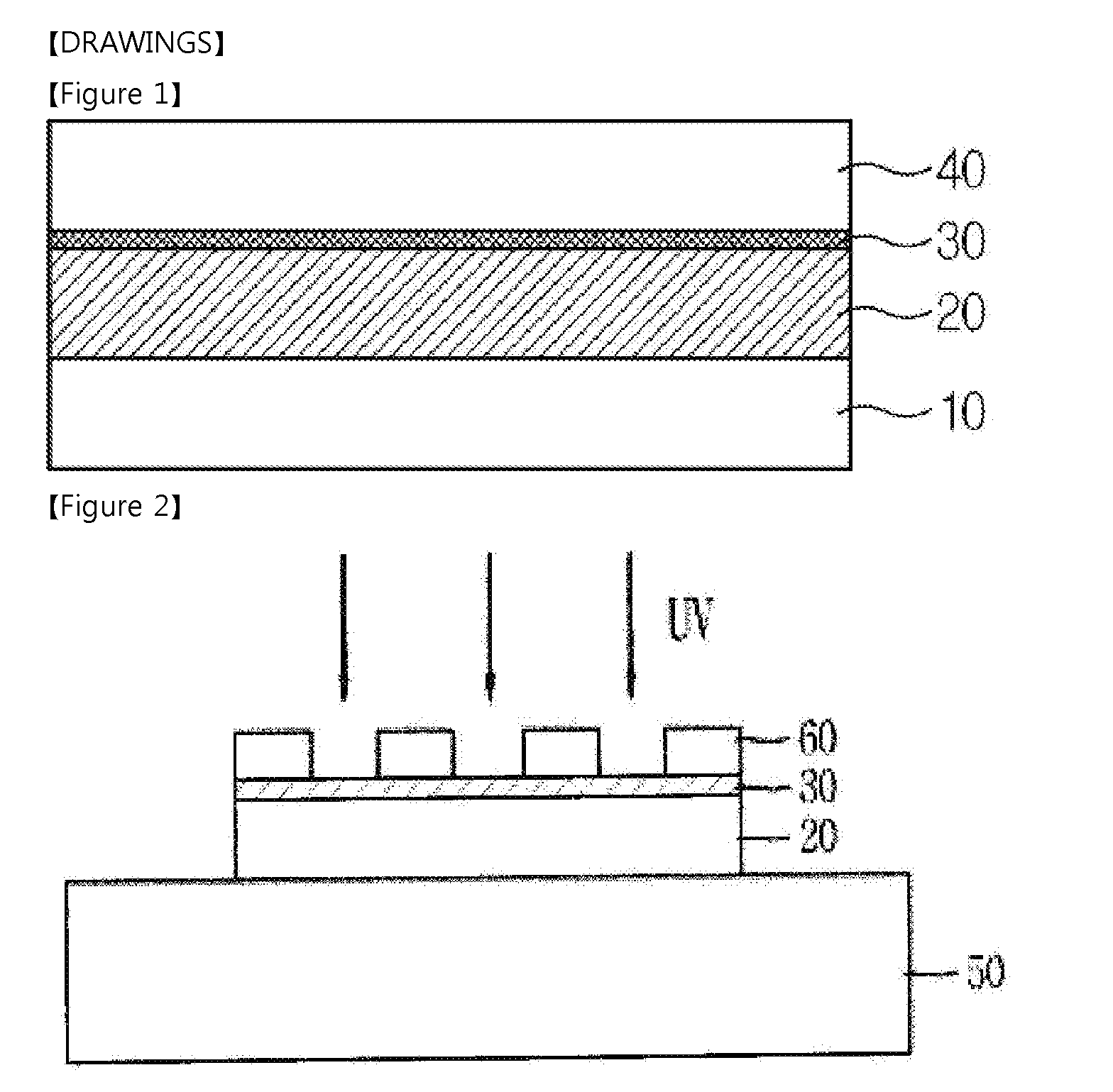Film type photodegradable transfer material
- Summary
- Abstract
- Description
- Claims
- Application Information
AI Technical Summary
Benefits of technology
Problems solved by technology
Method used
Image
Examples
examples 1 to 3
[0085](a) An acrylic acid polymer having a weight average molecular weight of 70,000 and a solid content of 40% was prepared by polymerizing methacrylic acid, methylmethacrylate (MMA) and styrene, which are mixed with each other at a mixing ratio of 20:70:10 by weight, under the condition that methylethyl ketone (MEK) is used as a solvent, 1% of azobisisobutyronitrile (AIBN) is used as a polymerization initiator, reaction temperature is 80° C., reaction time is 4 hours and 3% of azobisisobutyronitrile (AIBN) is used as a post-initiator.
[0086](b) The acrylic acid polymer was mixed with PEG 400 and MEK, given in Table I, and then stirred using a mechanical stirrer to obtain a composition for a resin protection layer. Subsequently, the composition for a resin protection layer was applied onto a support film (PET) having a thickness of 19 μm using a coating bar and then dried at a temperature of 80° C. for 10 minutes using a hot air oven to form a resin protection layer having a thickne...
PUM
| Property | Measurement | Unit |
|---|---|---|
| Thickness | aaaaa | aaaaa |
| Thickness | aaaaa | aaaaa |
| Force | aaaaa | aaaaa |
Abstract
Description
Claims
Application Information
 Login to View More
Login to View More - R&D
- Intellectual Property
- Life Sciences
- Materials
- Tech Scout
- Unparalleled Data Quality
- Higher Quality Content
- 60% Fewer Hallucinations
Browse by: Latest US Patents, China's latest patents, Technical Efficacy Thesaurus, Application Domain, Technology Topic, Popular Technical Reports.
© 2025 PatSnap. All rights reserved.Legal|Privacy policy|Modern Slavery Act Transparency Statement|Sitemap|About US| Contact US: help@patsnap.com


